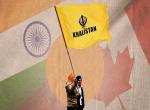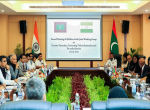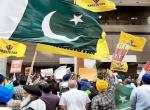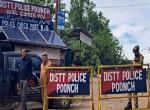After a three-month lull, violence has once again erupted in the Bodo areas of Assam. It was in July-August this year the areas witnessed major violence between Bodos and Muslims resulting in over 100 deaths and about 400,000 displaced. If the issue remains unaddressed, violence will continue to haunt the state again, and again. High on the priority, therefore, should be on toning down and finally eliminating the armed component of the issue. The armed component of the Bodo issue remains in the form of militant groups representing two broad categories of communities in the area – Bodos and non-Bodos – and the availability of illegal arms. ‘Non-Bodos’ are put here in one category for the convenience of analysis of the issue, but they rather comprise of three different groups: Adivasis, Muslims and Koch-Rajbongshis.
In the case of Bodos, different groups carried the mantle of radicalism in different time periods. In the 1980s it was the All Bodo Students Union; in the 1990s it was Bodo Liberation Tigers (BLT). After the 2003 Bodo Territorial Council (BTC) Accord, BLT laid down arms, but the National Democratic Front of Bodoland (NDFB) came to prominence. The NDFB has now been split as pro- and anti-talk factions headed respectively by Dhiren Boro and Ranjan Daimary. While the Dhiren Boro faction continues to talk with the Government of India, the Daimary faction has been involved in attacks on state targets and on non-Bodos like Adivasis and Muslims in Bodo areas. Although the NDFB chairman, Ranjan Daimary, is in custody, the group’s activities continue. Either of the militant groups has had hand in ethnic clashes that have erupted in the past two decades: 1993, 1994, 1996, 1998, 2008 and 2012. Fratricidal killings between NDFB and former BLT cadres over leadership of the Bodos are yet another troubling dimension of violence in Bodo areas. The NDFB opposed the BTC Accord and did not want to settle for anything less than “sovereign Boroland”. This was yet another motivation for the NDFB to attack BLT, which actually signed the Accord with the governments of India and Assam. There is also disagreement over the script for Bodo language. While BLT wants to stick to present Devnagri script, NDFB insists on adoption of Roman script.
As far non-Bodos are concerned, there are Adivasis, Muslims and Koch-Rajbongshis. There are about five militant groups that represent the Adivasi community: Adivashi People’s Army (APA), Adivashi National Liberation Army (ANLA), Santhal Tiger Force (STF), Birsa Commando Force (BCF), and Adivashi Cobra Military of Assam (ACMA). They stand for creation of Adivasi land to be carved out of the BTC area and Schedule Tribe (ST) status for the Adivasi community.1 They have indeed formally surrendered before the Home Minister of India on 24 January 2012, yet stick to their demands.2
The Government of Assam has identified 14 radical Muslim groups operating in Assam: Muslim Security Council of Assam, United Liberation Militia of Assam, Islamic Liberation Army of Assam, Muslim Volunteer Force, Muslim Liberation Army, Muslim Security Force, Islamic Sevak Sangh, Islamic United Reformation Protest of India, Revolutionary Muslim Commandos, Muslim Tiger Force, Muslim Liberation Front, Muslim Liberation Tigers of Assam, Muslim United Liberation Front of Assam United Muslim National Army (UMNA), and Muslim United Liberation Tigers of Assam.3 Of these, some groups like United Muslim National Army (UMNA), Muslim United Liberation Tigers of Assam (MULTA) and Muslim United Liberation Front of Assam (MULFA) are operating in Bodo areas.4 A recent report on Bodo clashes by the National Commission on Minorities observed that “The danger of Muslims in the BTC becoming militants in the future, in case their security was not ensured.”5 This was echoed by Asaduddin Owaisi in his remark at Lok Sabha on 08 August 2012. He observed, “If proper rehabilitation does not take place, you be ready for a third wave of radicalization among Muslim youth. …”6 If these observations are taken into consideration, the future trend of violence is likely to be on an upward trajectory.
Then there is Kamtapur Liberation Organisation (KLO) of Koch-Rajbongshis that has been demanding, among other things, the formation of a separate sovereign State of Kamatapur by combining six northernmost districts of West Bengal and the four westernmost districts of Assam. The vital “Chicken Neck” – the narrow corridor linking the Northeast with the rest of India – forms part of this area. Although not very strong in terms of arms and cadre strength, KLO enjoys considerable support among Koch-Rajbongshis, and has been involved in sporadic attacks. KLO’s links with ULFA, Nepali Maoists and the ISI has given a disturbing orientation to the threat profile.7
The latest concern is attempts by the CPI (Maoist) to push the boundaries of the ‘Red Corridor’ and set up support bases in upper Assam and some of the tribal areas in the hilly interiors. They cannot do this without establishing linkage with some of the militant groups of the Bodo areas like NDFB, KLO, ANLA, and APA. Presently, the linkage ranges from getting arms, ammunitions, communication devices to training. Maoists, in turn, are said to be providing explosives (ammonium nitrate) and funds to the northeast groups. Chinese small arms find their way to the ‘Red Corridor’ mainly through these groups. It is through the northeast groups the Maoists have good access to militant groups of Myanmar. Therefore, apart from military utility of training, arms procurement and sanctuary, the Maoists also found parts of the northeast of India as a new zone of “revolution” to establish what they call as “base areas”.
Armed groups representing all communities have to be tackled through appropriate means, either that be military, political or a mix of both. As long as they remain armed and active, insecurity and the consequent trust deficit would linger on. Negotiations with those groups that have ceased fire and entered into talks should be taken to a logical conclusion without much delay. Continuing with status quo without substantive breakthrough would cause uncertainty and frustration among the surrendered cadres. It is important to suitably rehabilitate them through innovative rehabilitation packages that also include gainful employment in the long run. Else, they would return to militancy sooner or later.
Easy availability of illegal arms in Assam that has encouraged killings, kidnappings and extortions is yet another dimension of the armed component. It is reported that “extremist groups like the Bodo Liberation Tigers and National Democratic Front of Bodoland have as many as 350-400 automatic weapons in their arsenal in the four districts comprising BTAD—Kokrajhar, Chirang, Udalguri and Baksa.”8 It is appreciable that the some arms could be seized in the BTC area by a military operation this September. But, this is not enough. Apart from taking control of all illegal weapons, it is also important to control their flow from across the borders, especially from China, Myanmar and Bangladesh.
Analysing all previous incidents of violence in Bodo areas, it is clear that as and when the security apparatus missed taking note of symptoms of unrest and as and when it failed to take appropriate proactive action, the situation got out of control. The issue is that the BTAD region has become a tinderbox that needs only a spark to explode. The state police and the Intelligence should have taken appropriate action in early March 2012 itself when Bodos started commemorating 25 years of their “struggle”. Similar symbolisms and assertions were bound to be displayed by non-Bodo groups, especially Muslims and Adivasis. The manifestation of such assertions by competing groups was always through violence. This should be understood. Signs of imminent clashes were simmering since May, but were not taken seriously by the government. Even during 2008 clashes between Bodos and Muslims, the state security apparatus was caught unawares. Justice Phuken Commission Report blamed, apart from Muslim Students Union of Assam (MUSA) for initiating the violence, the state intelligence for the gross negligence.9
It is also important to find a lasting solution to the issue of illegal immigration from Bangladesh. The entire stretch of 4,096-km India-Bangladesh border is heavily populated, making monitoring extremely difficult. Fencing has to a large extent been acting as an obstacle, but only 2,760.12 km have been fenced so far. 10 The remaining stretch should be fenced at the earliest, complimented with floodlights and hi-tech surveillance devices. Most importantly, existing border has to be demarcated at the earliest to make them free of ‘enclaves’ and ‘adverse possessions’. Although the Border Security Force (BSF), in charge of policing the border, has been doing its job creditably, the force levels are not sufficient to monitor the long and difficult border. Apart from raising new battalions, it is important not to divert the BSF for duties other than border management. They also have to be equipped legally to handle situations at borders that include not only illegal migration, but also smuggling, drug-trafficking, counterfeits, and militant movements. Apart from creating physical hurdles, it is also important to discourage illegal migrants through suitable deterrent legislation. Till recently, illegal migrants in Assam were handled by Illegal Migration (Determination by Tribunals) Act, 1983, that was held as unconstitutional by the Supreme Court in 2005 as it was “coming to the advantage of such illegal migrants as any proceedings initiated against them almost entirely ends in their favour, enables them to have a document having official sanctity to the effect that they are not illegal migrants.”11 An exclusive refugee/migration law is long pending. At some pockets, issue of temporary work permits can be considered so that Bangladeshis can come, work and go back. At the diplomatic level, India should not hesitate to raise the issue of illegal migration with Bangladesh so that the problem is addressed at its source.
Endnotes
- “Demand to carve out Adivasi land from BTC,” The Assam Tribune, 11 July 2012.
- “North East militants surrender before Chidambaram,” The Hindu, 24 January 2012.
- “Government of Assam to thwart 14 radical Islamic groups,” The Northeast Today, 21 August 2012.
- “Centre eye on rise of Muslim rebel groups,” The Times of India, 22 August 2012.
- National Commission on Minorities, “Report on Visit to Bodoland Territorial Autonomous Districts (BTAD) and Dhubri District in Assam,” July 2012, p. 6.
- Lok Sabha, Proceedings with Questions and Answers, Part I, Asaduddin Owaisi, 08 August 2012, p. 95.
- Subodh Ghildiyal, “ULFA, KLO foot soldiers of ISI, The Times of India, 25 November 2006.
- S.N.M. Abdi, “The 50-50-shot,” Outlook, 03 September 2012.
- “2008 riots: probe panel blames MUSA, Assam police intelligence wing,” The Hindu, 21 July 2010.
- Ministry of Home Affairs, Government of India, Annual Report 2011-12, pp. 46-47.
- “IMDT Act is the biggest barrier to deportation, says Supreme Court,” The Hindu, 14 July 2005.
Published Date: 3rd December 2012, Image Courtesy: Pulitzer Center









Post new comment